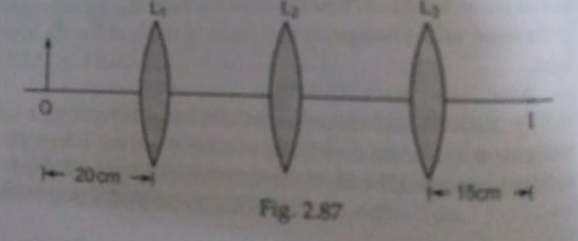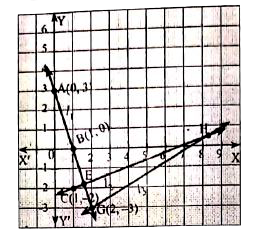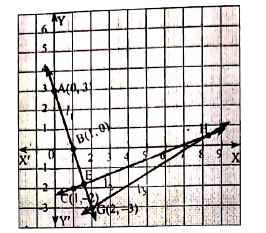You are given three lenses L1,L2 and L3 each of focal lenth 15 cm.An object is kept at 20 cm in front of L1 as shown in Fig.2.87.
The real image is formed at the focus I of L3.Find the separations between L1,L2 and L3.
 .Solution in Punjabi
.Solution in Punjabi
Step by step video & image solution for You are given three lenses L_1,L_2 and L_3 each of focal lenth 15 cm.An object is kept at 20 cm in front of L_1 as shown in Fig.2.87.The real image is formed at the focus I of L_3.Find the separations between L_1,L_2 and L_3.. by Physics experts to help you in doubts & scoring excellent marks in Class 12 exams.
Updated on:21/07/2023Topper's Solved these Questions
- REFRACTION OF LIGHTBOOK - MODERN PUBLICATIONCHAPTER - REFRACTION OF LIGHTEXERCISE - EXERCISE
168 Videos
- REFLECTION OF LIGHTBOOK - MODERN PUBLICATIONCHAPTER - REFLECTION OF LIGHTEXERCISE - EXERCISE
57 Videos
- SEMICONDUCTOR DEVICESBOOK - MODERN PUBLICATIONCHAPTER - SEMICONDUCTOR DEVICESEXERCISE - EXERCISE
174 Videos
Similar Questions
Explain the phenomenon of refraction at a plane surface separating two transparent media and show that μ=c/v where letters have their usual meanings.
View SolutionState the characteristis of image formed by a plane mirror.
View SolutionExplain the two processes involved in the formation of a p-n junciton diode. Hence defien the term"barrier potential".
View SolutionProve that the three lines from the origin O, with direction cosines l_1,m_1,n_1; l_2,m_2,n_2;l_3,m_3,n_3 are coplaner if |[l_1,m_1,n_1],[l_2,m_2,n_2],[l_3,m_3,n_3]|=0
View SolutionFind the values of ∮→B.→dl for the loops L1,L2andL3 in Fig. (The sense of →dl is mentioned in the figure)

View SolutionThree lenses L_1,L_2,L_3 each of focal length 30 cm are placed co-axially as shown in (Fig. 11(b).57). An object is held at 60 cm from the optic centre of lens L_1 . The final real image is formed at the focus of L_3 . Calculate separation between (i) L_1 and L_3 (ii) L_2 and L_3 ? .
View SolutionIn Fig., there are two convex lenses L_1 and L_2 having focal lengths F_1 and F_2 respectively. The distance between L_1 and L_2 will be : .
View SolutionThree energy levels L_1,L_2 and L_3 of a hydrogen atom correspond to increasing values of energy i.e., E_(L_1) lt E_(L_2) lt E_(L_3) . If the wavelength corresponding to the transitions L_3 to L_2, L_2 to L_1 and L_3 to L_1 are lambda_3, lambda_2 and lambda_1 respectively then
View SolutionIf line l1 is perpendicular to line l2 and line l3 has slope 3 then find the equation of line l1

View SolutionIf line l1 is perpendicular to line l2 and line l3 has slope 3 then find the equation of line l2

View SolutionIf l1,l2,l3 are the lengths of the emitter, base and collector of a transistor, then
View SolutionConsider the lines given by L1:x+3y−5=0 L2:3x−ky−1=0 L3:5x+2y−12=0 Column I|Column II L1,L2,L3 are concurrent if|p. k=−9 One of L1,L2,L3 is parallel to at least one of the other two if|q. k=−65 L1,L2,L3 form a triangle if|r. k=56 L1,L2,L3 do not form a triangle if|s. k=5
View SolutionIf l_1,l_2,l_3 are the lengths of the emitter, base and collection of a transistor then:
View SolutionProve that the three lines drown from origin with direction cosines (l1,m1,n1),(l2,m2,n2),(l3,m3,n3) are coplanar if ⎡⎢⎣l1m1n1l2m2n2l3m3n3⎤⎥⎦=0.
View SolutionIf l_1,l_2,l_3 are the lengths of the emitter, base and collector of a transistor, then
View SolutionFind the values of ointvecB.vec(dl) for the loops L_1, L_2 and L_3 in Fig. (The sense of vec(dl) is mentioned in the figure)
View Solution
